|

"Discover AURA: The Future of Elderly Care. Our innovative AI-powered medication system goes beyond medication management, offering companionship, daily support, and a bridge to loved ones for the elderly and individuals with dementia. Embrace autonomy and connection with AURA, where technology meets compassionate care."
AURA represents a groundbreaking step in home health care technology. This AI-powered medication system is specifically engineered to revolutionize the daily lives of individuals with dementia, as well as the elderly living independently. Equipped with the intelligent AI assistant, also named AURA, the device ensures timely and accurate medication dispensing. However, AURA's capabilities extend far beyond managing prescriptions. It actively engages with users through daily check-ins, providing a comforting voice and answering queries related to their routines and well-being. AURA also facilitates seamless connection with family members, fostering a sense of community and belonging. By offering support with daily activities, AURA assists elderly individuals in maintaining their autonomy, whether they reside in their own home or a care facility.

We divided our user testing into three parts. Our priority was testing the conversation between dementia patients and a customized AI based on ChatGPT. This included testing the clarity of medication instructions, the use of check-in questions, and the naturalness of casual daily companionship conversations. After proving that this concept works, we continued on creating a UI with an embodied character to talk to. The last part was testing our physical form. This included its stability, ease of pill retrieval, and determining the optimal size for practicality and user comfort.
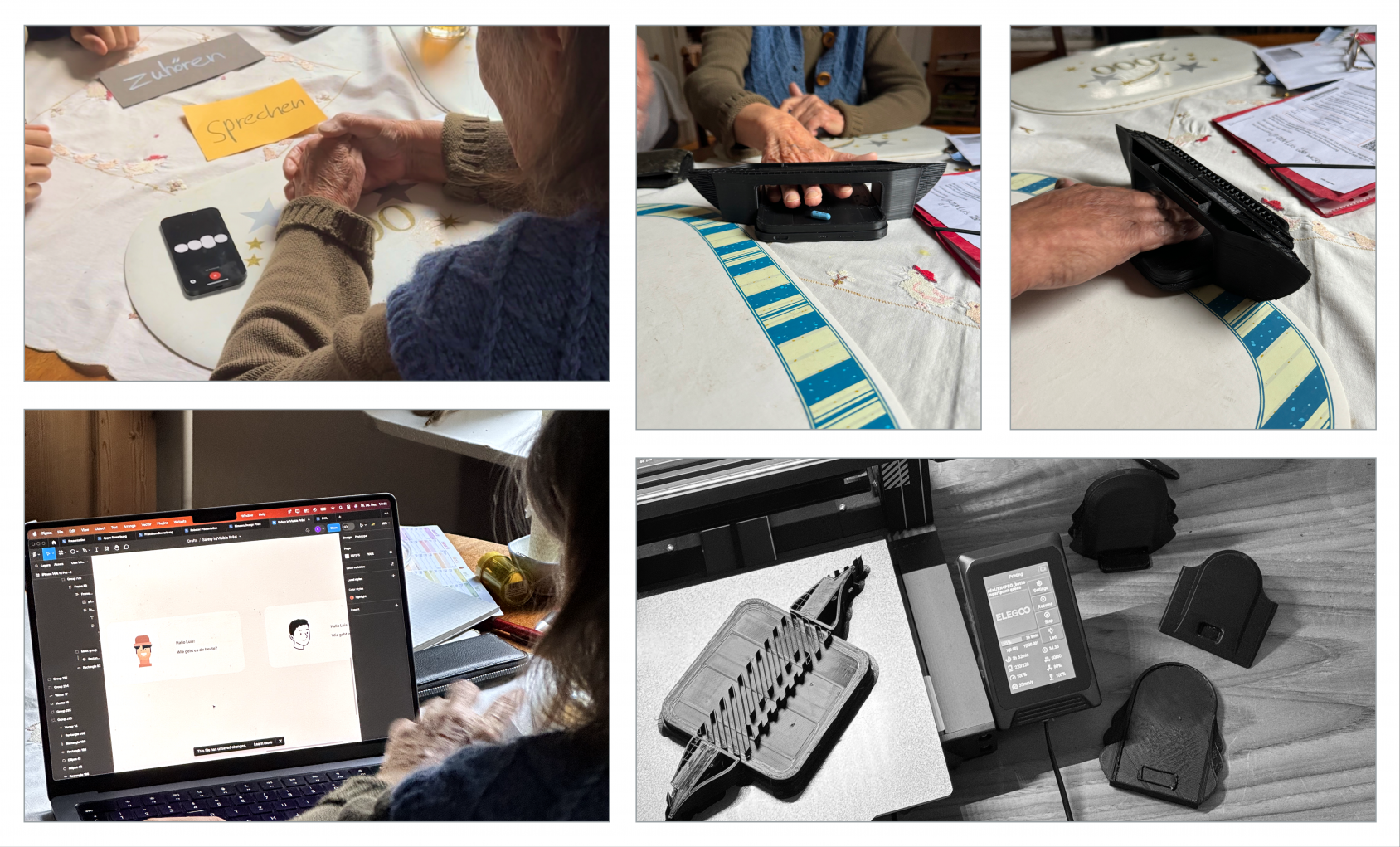
When designing AURA's information architecture, we established it as a link between patients and their network of family, caregivers, and doctors. AURA acts as a central hub, organizing and distributing data relevant to each party. For patients, the user journey is anchored in a Speech UI, while others interact through an app. In crafting the patient's ux, we used two key principles to ensure optimal outcomes. Additionally AURA uses both audio and visual cues to encourage medication adherence. For example 'After taking your medication, we can listen to your favorite song!' This approach integrates treatment with enjoyable activities, enhancing the overall user experience.

AURA stands as a beacon, bridging the gap between patients and their circle of family, caregivers, and healthcare providers. It serves as a pivotal hub, meticulously curating and funneling vital information to each stakeholder. At the heart of the patient's interaction lies a Speech UI, tailored for simplicity and ease. This central feature anchors the user journey, offering a seamless experience for the patients themselves.

In the design of AURA's user experience for patients, we adhered to two foundational principles to foster optimal interaction outcomes. AURA employs a symphony of audio and visual prompts to bolster medication adherence, enhancing engagement through pleasant, familiar audio experiences—like playing a favorite song post-medication. This methodology harmoniously blends treatment with personal joy, elevating the everyday user experience.
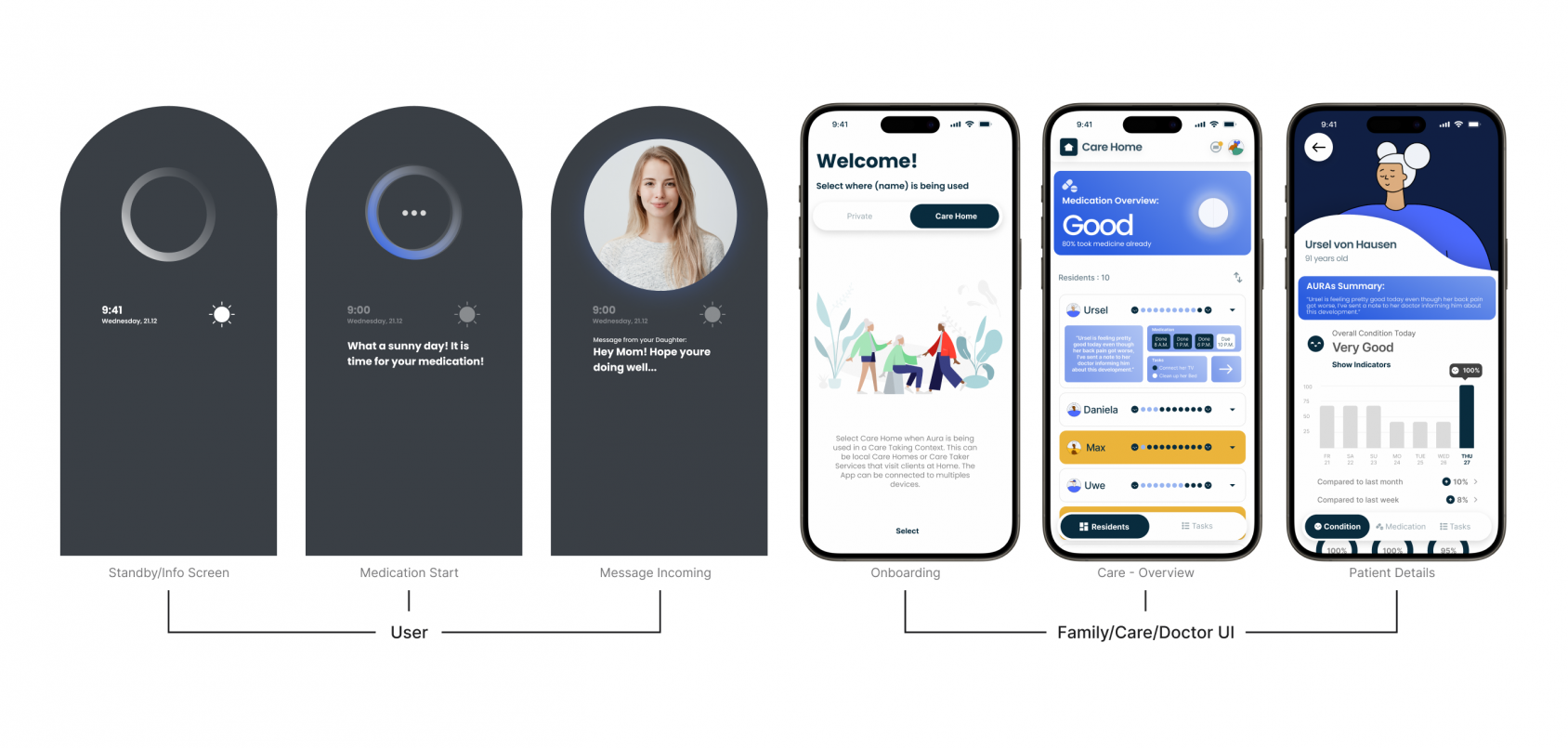
All Interaction with the patients are crafted in the speech UI and are done over the Aura Device and Aura Pin. In crafting the patient's User Experience, we used two key principles to ensure optimal outcomes: Validation and Reassurance. Additionally AURA uses both audio and visual cues to encourage medication adherence. For example 'After taking your medication, we can listen to your favorite song!' This approach integrates treatment with enjoyable activities, enhancing the overall user experience.
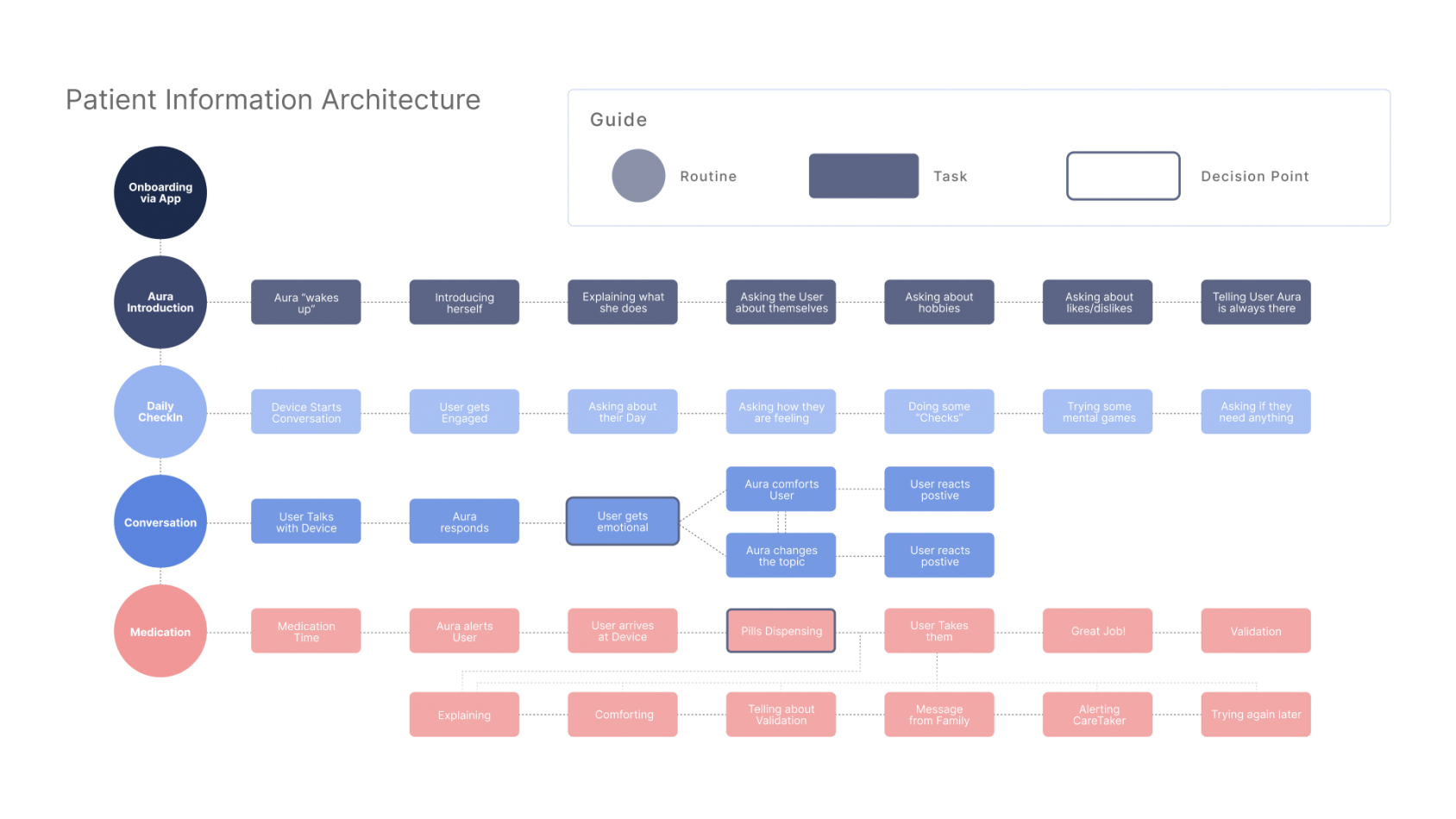
In addition to the main Aura station, we've developed a companion drone. This adaptable device attaches to clothing with high tech Velcro, allowing users to place it wherever they find most convenient. The drone ensures that Aura's assistance is always at hand, ready to answer questions, provide comfort, or guide the user back to the main station. It features an LED ring, mirroring Aura's distinctive shape, which serves as a visual guide for users throughout their home. The Drone is charged wirelessly at the Aura Stations power adapter.
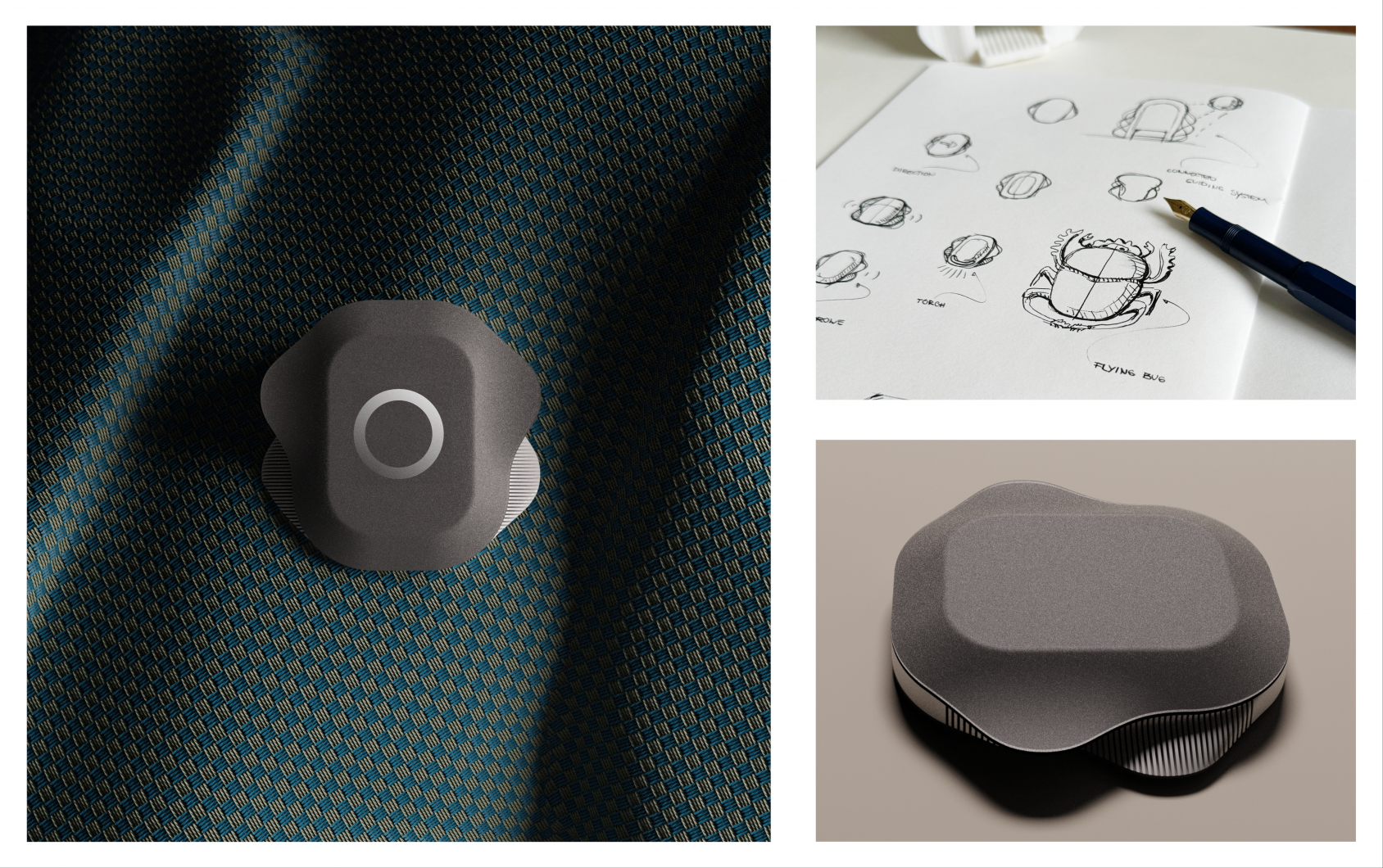
Aura's shape draws inspiration from classic desk clocks and jukeboxes, giving a sense of familiarity. This is complemented by an organic design along the sides, which discreetly houses the speakers and microphones. Together, these elements give Aura a lifelike presence, further accentuated by its user interface representation.
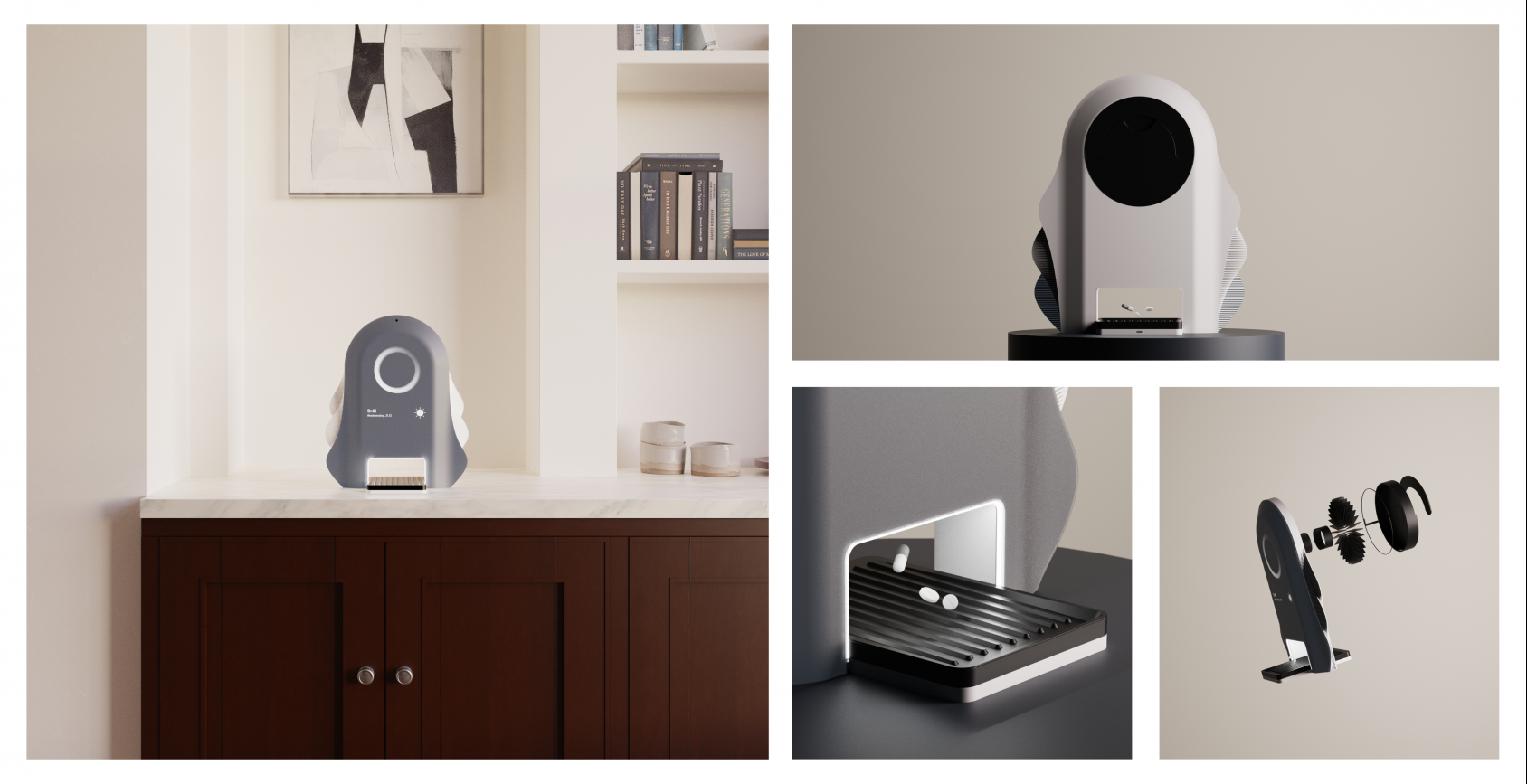
The medication dispensing system features a removable wheel that holds up to 14 days of medication, with doses four times a day, simplifying refills for family or caregivers. Equipped with weight sensors and a camera, the ergonomic removable bottom dispenser ensures correct pill intake, while LED lights provide additional visual cues for the user.
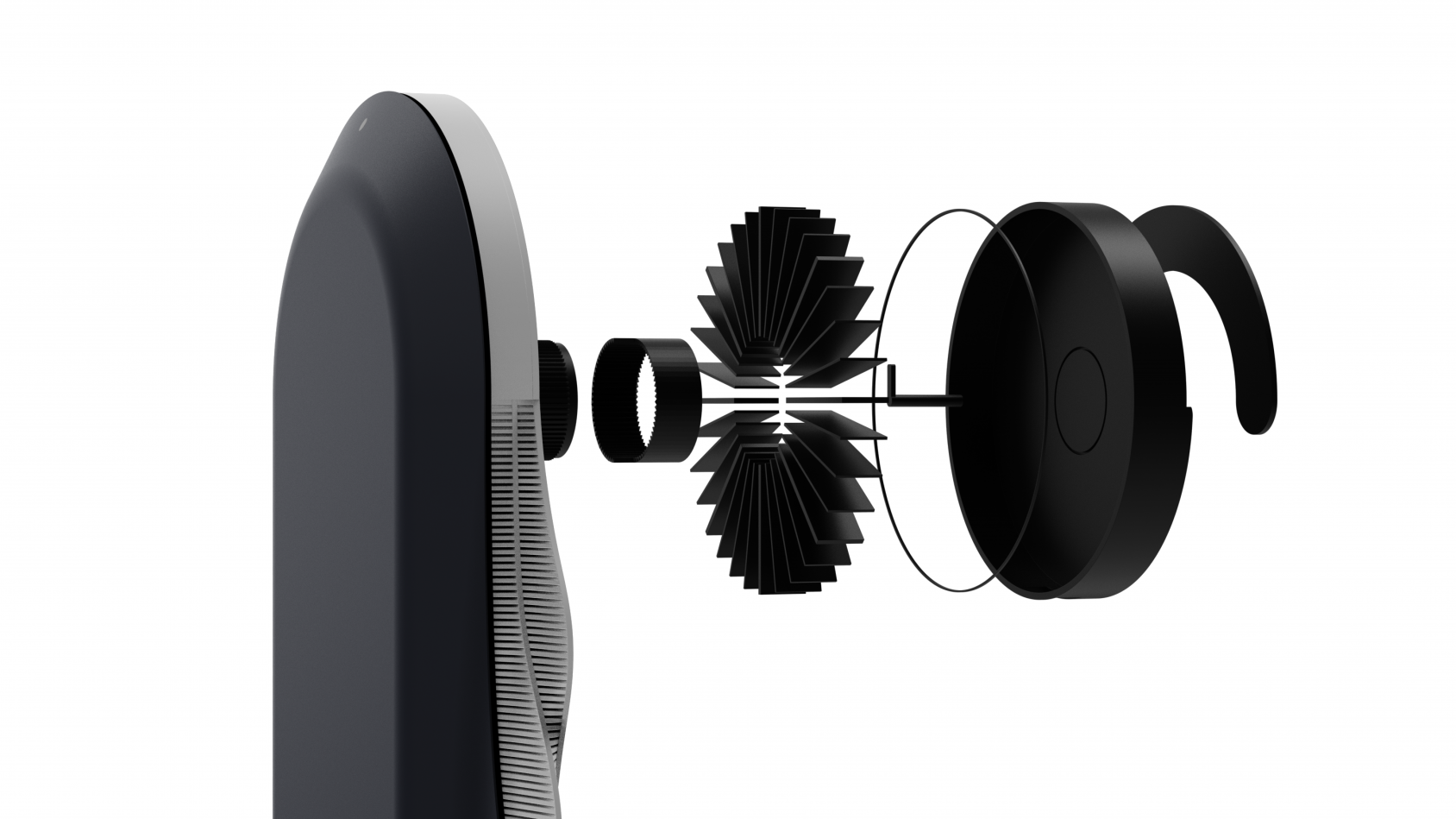
The exhibition of Aura, a pill dispenser with integrated AI, is pivotal for showcasing its innovative approach to elderly care, particularly for those with dementia. This device simplifies medication management, significantly easing the workload for caregivers and minimizing dosage errors. The opportunity for users to interact with Aura and its AI at the exhibition highlights the device's empathetic design and user-friendly interface, designed for cognitive support and social assistance. Experiencing Aura's functionality firsthand allows users to appreciate its intuitive operation and the emotional support it provides, demonstrating how technology can be leveraged to meet the complex needs of the elderly, fostering a more independent lifestyle. This interaction emphasizes the role of empathetic AI in improving life quality for older individuals, illustrating Aura's capacity to blend technology with a personal touch in care.
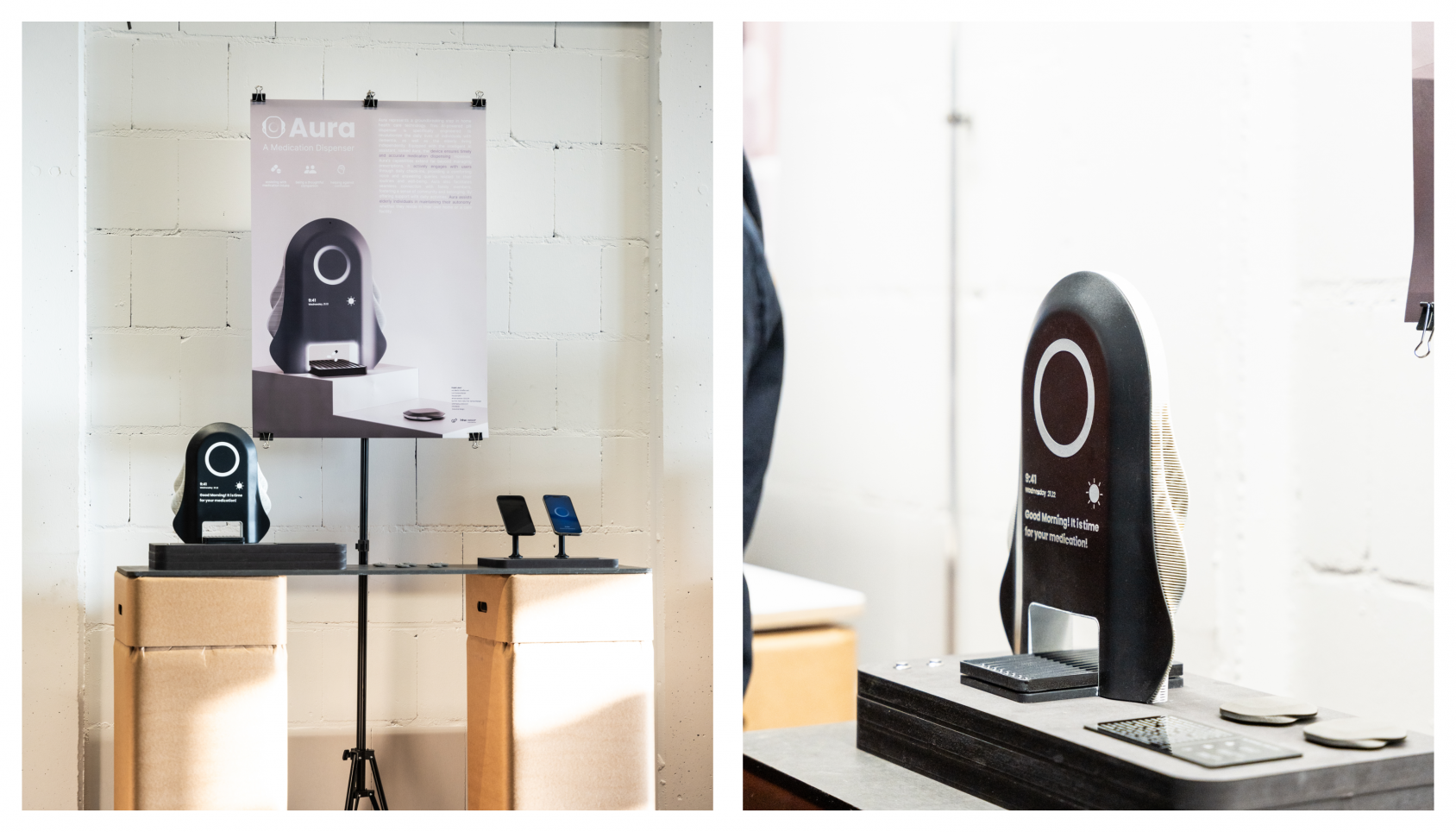
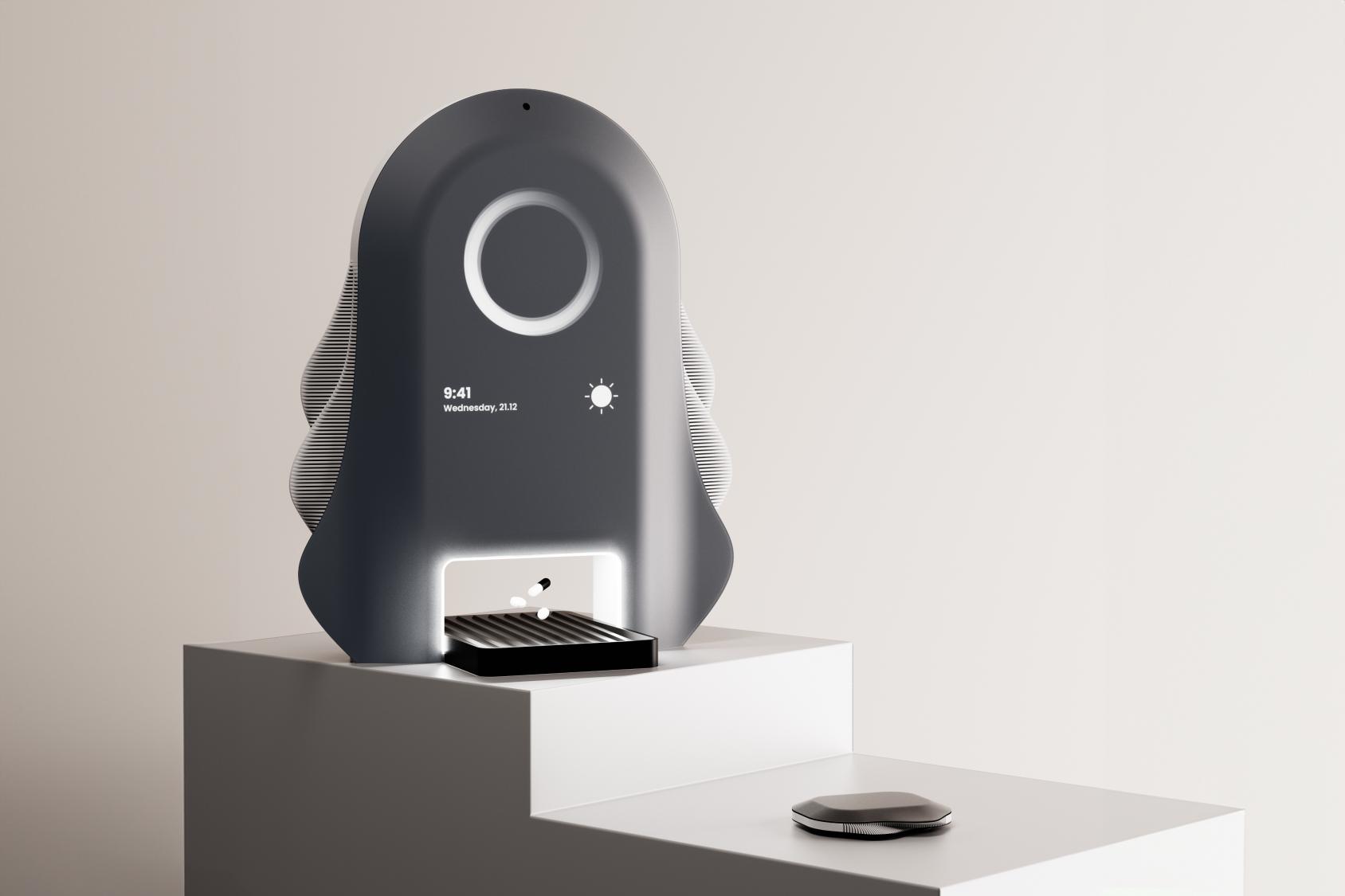
|